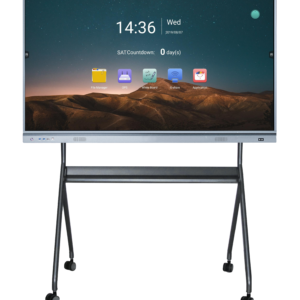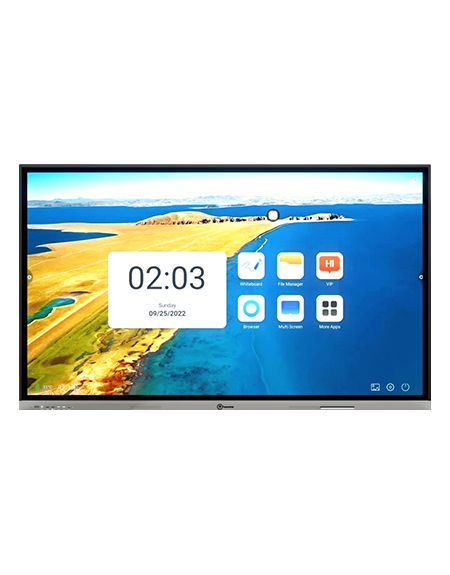Interactive Panels: Enhancing Learning and Collaboration in the Digital Age
Interactive panels have revolutionized the way we learn, teach, and collaborate in the modern digital age. These state-of-the-art tools combine the functionalities of a computer, a touch screen, and a whiteboard, allowing users to interact, manipulate, and share digital content in real-time. Whether you are a teacher, a trainer, a presenter, or a team leader, interactive panels offer a range of benefits that can enhance your communication, engagement, and productivity. In this blog post, we will explore some of the most common questions and answers about interactive panels and their uses, benefits, and features.
What are interactive panels?
Interactive panels are large, high-definition touch screens that can display and manipulate digital content such as documents, images, videos, and web pages. They come in various sizes, ranging from 55 to 98 inches, and offer a wide range of interactive features such as handwriting recognition, multi-touch gestures, wireless connectivity, and audio and video conferencing. Interactive panels can be used for a variety of applications, such as education, training, collaboration, entertainment, and information display.
How do interactive panels work?
Interactive panels work by combining the functionalities of a computer, a touch screen, and a whiteboard. They are usually connected to a computer or a network that provides the content and the applications to be displayed. The users can interact with the content by touching the screen with their fingers, a stylus, or other input devices. The interactive panel software recognizes the touch and translates it into digital commands that can manipulate the content in various ways, such as writing, drawing, erasing, highlighting, resizing, rotating, and moving.
What are the benefits of interactive panels?
Interactive panels offer a range of benefits that can enhance learning, teaching, and collaboration in various contexts. Here are some of the most common benefits:
Enhanced engagement: Interactive panels can increase the engagement and motivation of learners and users by providing a more dynamic, interactive, and immersive learning experience. They can also provide immediate feedback, personalized learning paths, and gamification elements that can make the learning process more engaging and fun.
Improved collaboration: Interactive panels can facilitate collaboration and communication among learners, teachers, and team members by enabling real-time sharing, annotation, and co-creation of digital content. They can also provide remote access and video conferencing capabilities that can enable distributed teams and learners to collaborate more effectively.
Increased productivity: Interactive panels can improve productivity and efficiency by providing a more streamlined, intuitive, and customizable workflow for tasks such as brainstorming, planning, presenting, and reviewing. They can also reduce the need for paper-based materials, printing, and storage, which can save time and resources.
Accessibility: Interactive panels can enhance accessibility for learners with disabilities by providing features such as text-to-speech, audio description, and tactile feedback. They can also provide translation, transcription, and captioning features that can support multilingual and diverse audiences.
What are the features of interactive panels?
Interactive panels can have a range of features and specifications, depending on the brand, model, and purpose. Some of the most common features are:
High-definition display: Interactive panels typically have a high-resolution display that can show clear and sharp images and videos even in bright or dark environments.
Touch screen: Interactive panels have a touch-sensitive surface that can detect and respond to various types of touch and input, such as fingers, styluses, and gestures.
Interactive software: Interactive panels come with software that can enable various interactive features such as handwriting recognition, multi-touch gestures, and digital whiteboarding.
Wireless connectivity: Interactive panels can connect to Wi-Fi or other wireless networks to enable remote access, content sharing, and video conferencing.



Comments
Post a Comment